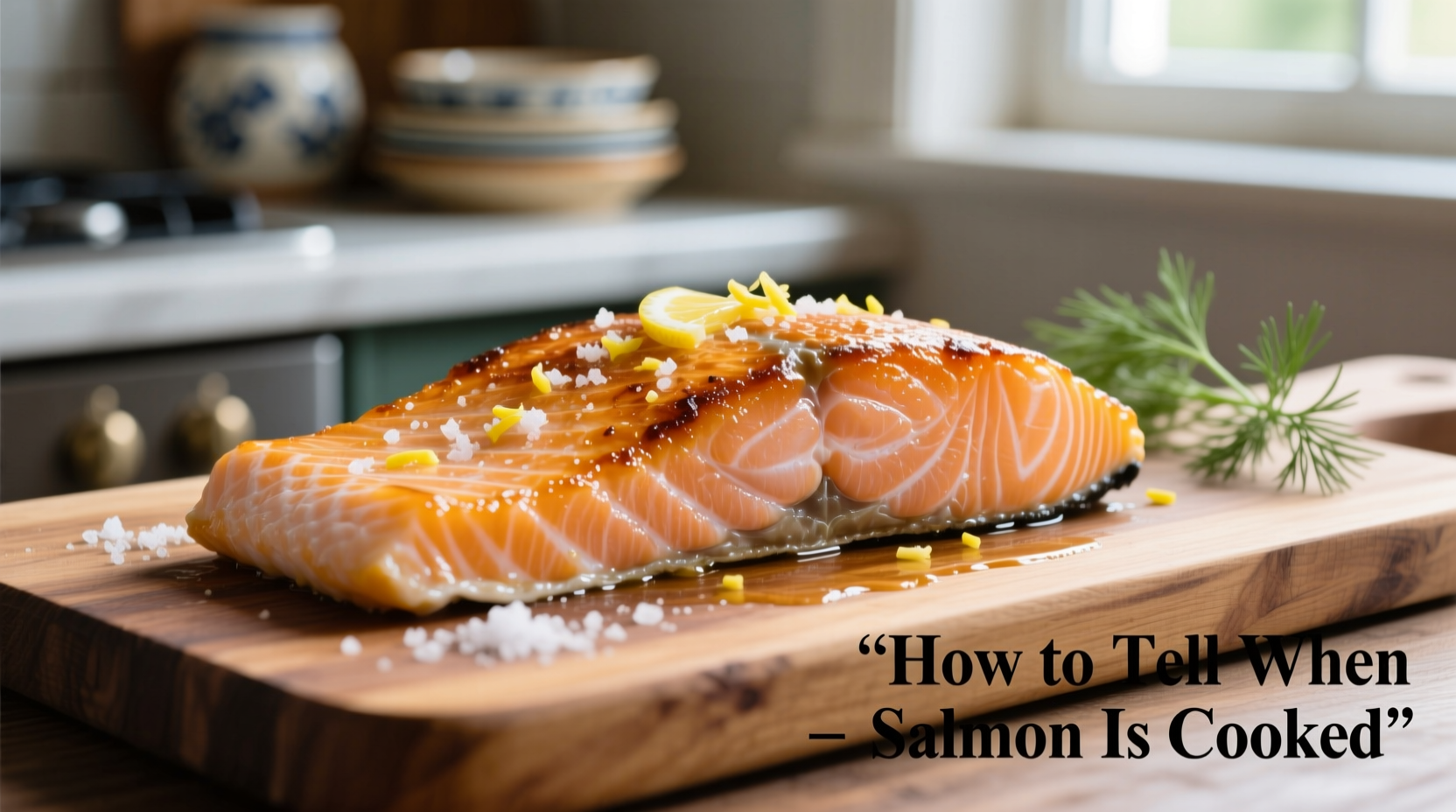The Critical Importance of Proper Salmon Cooking
Getting salmon cooking time right separates a restaurant-quality meal from a disappointing dinner. Undercooked salmon risks foodborne illness from parasites like Anisakis, while overcooked salmon loses its delicate texture and valuable omega-3 fatty acids. The narrow window between underdone and overdone makes precise doneness detection essential for both safety and culinary success.
Understanding Salmon's Transformation During Cooking
As salmon heats, its muscle fibers contract and proteins denature in predictable stages. This scientific process explains why visual and textural changes reliably indicate doneness. The FDA recommends cooking fish to 145°F for absolute safety, but culinary professionals often pull salmon at 125°F-130°F since residual heat continues cooking during resting (carryover cooking).
| Temperature Range | Visual Appearance | Texture | Recommended For |
|---|---|---|---|
| 110°F-120°F | Translucent, raw appearance | Very soft, jelly-like | Sushi-grade only |
| 125°F-130°F | Mostly opaque, slight translucency center | Firm but yielding, flakes gently | Most cooking methods |
| 135°F-140°F | Fully opaque | Firm, separates easily | Grilling, high-heat methods |
| 145°F+ | Dry, chalky appearance | Tough, stringy | Overcooked - avoid |
Four Foolproof Methods to Determine Salmon Doneness
1. Digital Thermometer Method (Most Accurate)
Insert an instant-read thermometer into the thickest part of the salmon, avoiding bones. For medium-rare perfection, remove from heat at 125°F; for medium, pull at 130°F. Remember that carryover cooking will raise the temperature 5°-10°F during the 5-minute resting period. This method eliminates guesswork and delivers consistent results every time you cook salmon.
2. Flaking Test (Traditional Technique)
Gently press the tip of a fork into the salmon's thickest section and twist slightly. Properly cooked salmon will flake into distinct segments while still appearing moist. Undercooked salmon resists flaking and remains translucent, while overcooked salmon separates too easily into dry, stringy pieces. This method works best when combined with visual inspection for beginners learning how to tell when salmon is cooked properly.
3. Visual Color Transformation
Watch for the color change from deep translucent red or orange to opaque pinkish-white. Start checking when the bottom third appears cooked, as heat travels upward. The ideal finish shows uniform opacity with just a hint of translucency in the very center. Note that wild salmon retains more color than farmed varieties, so don't rely solely on color when determining when salmon is done cooking.
4. Texture and Firmness Assessment
Press gently on the salmon with your finger or a spatula. Perfectly cooked salmon offers slight resistance then springs back partially. Undercooked fish feels soft and leaves an indentation; overcooked salmon feels rigid and doesn't yield. This technique requires practice but becomes intuitive with experience cooking salmon regularly.

Avoiding Common Salmon Cooking Mistakes
Many home cooks make these critical errors when preparing salmon. Recognizing these pitfalls helps you consistently achieve restaurant-quality results:
- Mistake: Relying solely on cooking time rather than internal temperature or visual cues Solution: Start checking doneness 3-5 minutes before expected finish time
- Mistake: Misinterpreting albumin (the white protein foam) as overcooking Solution: Albumin appears around 140°F but doesn't indicate dryness - gently wipe it away
- Mistake: Not accounting for carryover cooking during resting Solution: Always remove salmon from heat 5°-10°F below target final temperature
- Mistake: Using the same method for all cooking techniques Solution: Adjust doneness standards for different methods (see context guide below)
Context-Specific Doneness Guidelines
How you cook salmon affects the ideal doneness point. These context boundaries help you adapt your approach:
- Pan-searing: Look for golden crust with slightly translucent center when removed from heat (will finish cooking on the plate)
- Baking: Check at 10-12 minutes for 1-inch fillets; oven cooking continues significantly during resting
- Grilling: Cook to 135°F-140°F due to higher surface heat and less carryover cooking
- Poaching: Remove at 125°F as gentle heat produces more even cooking with minimal carryover
- Wild vs. farmed: Wild salmon has less fat, so cook to lower temperatures (120°F-125°F) to prevent drying
Troubleshooting Salmon Cooking Results
Even experienced cooks occasionally miss the perfect window. Here's how to handle common issues:
- Slightly undercooked: Return to gentle heat for 1-2 minutes, checking every 30 seconds
- Overcooked but still moist: Slice thinly and serve with sauce or incorporate into salads
- Dry and tough: Flake and use in salmon cakes, pasta dishes, or fish tacos where moisture is added
- Inconsistent cooking: Next time, bring salmon to room temperature before cooking and ensure even thickness
Pro Tips for Perfect Salmon Every Time
Professional chefs use these advanced techniques to consistently cook salmon to perfection:
- Pat salmon completely dry before cooking for better searing and more accurate visual assessment
- Use the "touch test" comparison: properly cooked salmon feels similar to the fleshy part of your palm below the thumb
- For skin-on salmon, check doneness by lifting the edge - the skin should release easily from the pan when properly cooked
- Always rest cooked salmon for 5 minutes to allow juices to redistribute before serving











 浙公网安备
33010002000092号
浙公网安备
33010002000092号 浙B2-20120091-4
浙B2-20120091-4